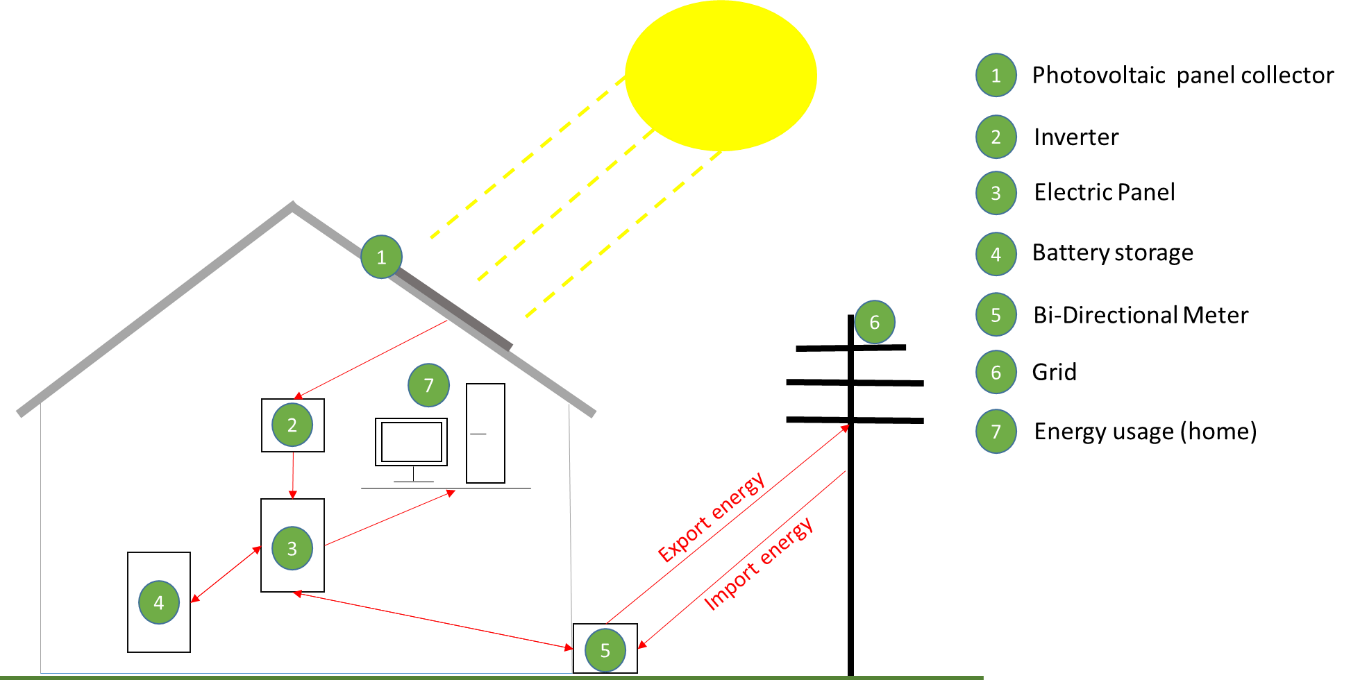Batteries are part of the future of the energy market. Different major automation companies such as Panasonic, Siemens, Samsung and specialised battery manufacturer such as Leclanché and Varta are investing heavily in this market. They do expect an important growth in the next 10 years. Electrical energy storage has already been used with success to manage the grid of small networks. With the increasing demand of private solar PV stations for homes and the arrival of new players in the storage market, we can expect storage batteries demand to increase.
Concepts:
A typical EES customer will be equipped with a Photovoltaic installation connected to the grid. This would give him the benefit of storing the energy produced from the PV installation and selling the excess to the grid. It is also possible to store or use energy from the grid when needed.
Home installation:

| Nb. | Components | Descriptions |
| 1 | Photovoltaic panel collector | A Photovoltaic panel collector installed on the roof of a house. Ideally directed on the south side of the house to increase the efficiency. |
| 2 | Inverter | This is an AC/DC inverter to convert the DC energy produced from the Solar panel to be used in AC for home usage. |
| 3 | Electric Panel | Electric Panel regulate the electricity and divert electricity according to demand directly to the house sockets for home usage, to the battery storage or back to the grid. |
| 4 | Battery storage | This is the electrical energy storage battery which is capable to store Photovoltaic produced electricity or energy from the grid. |
| 5 | Bi-Directional Meter | This is the meter managing the export and import of energy to the grid. This bi-directional meter is here to calculate the quantity used and sold (import and export). |
| 6 | Grid | The grid is the electrical network used to deliver electricity from energy distributor to consumers. In this picture the network is used to import and export energy. |
| 7 | Home usage | Energy usage for home appliances (Ex: Lamps, TV, Fridge…). |
Risks:
– Batteries costs
– Space of the batteries
– Efficiency with the energy transfer of the batteries
– Duration: Durability of the batteries with the lifecycle usage of the batteries
– Environmental footprint of the battery production
Market Drivers:
– Battery price reduction
– Energy price increase
– Government support with purchase subside or tax reduction
– Positive sales evolution of PV
– Positive sales evolution of EV
